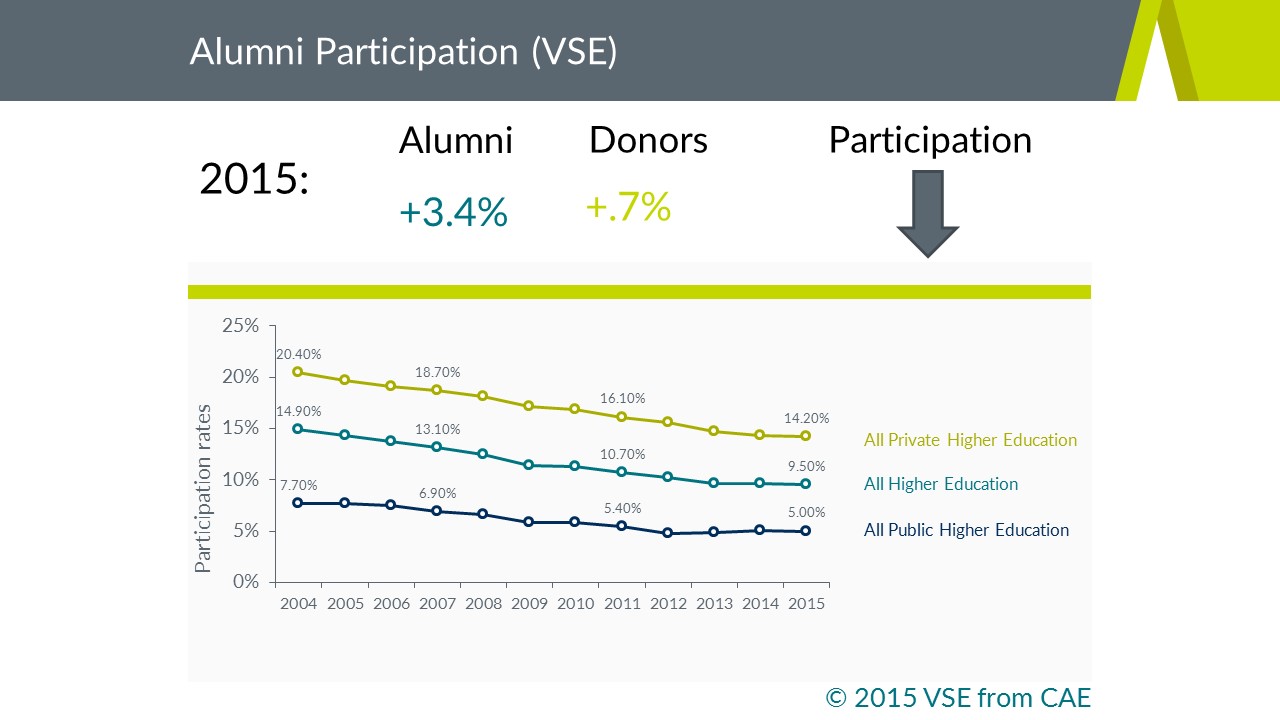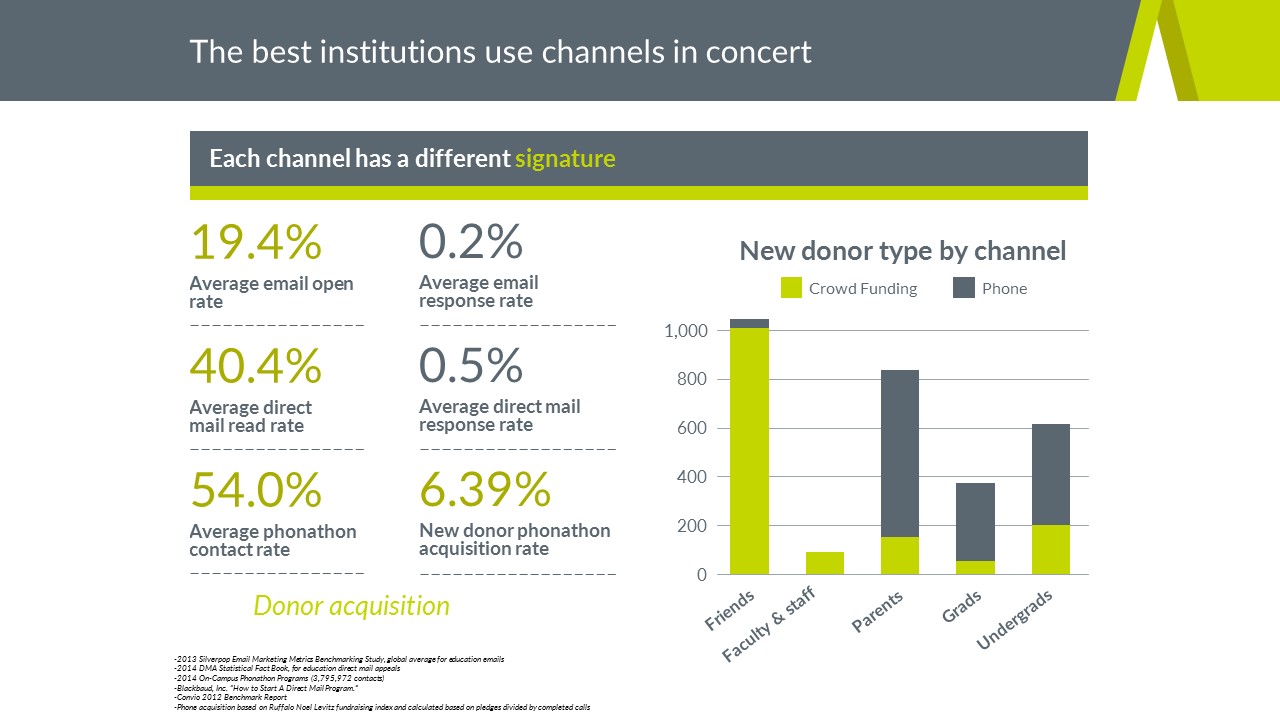fundraising
Fundraising donor decline: Top takeaways from our webinar
We recently conducted a webinar on the issue of alumni participation and fundraising donor decline in higher education. We knew it was a hot topic, but we were simply blown away when over 400 people attended the two webinar sessions. Clearly the issue of donor numbers is very important to higher education giving professionals.
Here are some of the key points we covered (click here to listen to the webinar recording).
- Higher education alumni donor participation is declining. Sure, we have big alumni pools and we can reach many people, which throws the denominator of living alumni up to historic levels, but a majority of institutions have lost donors since 2007, and the decline in participation is fueled by significant decline in annual donor count at many institutions.

- The money in higher education is very good right now. Many large donors are distributing their wealth. But more than three quarters of these donors have given annually before making a big gift. We’re trading on the success from decades of annual engagement. This is a “head fake,” and if we don’t get our heads around fundraising donor decline, pretty soon we’ll run out of engaged givers to build our major gift programs.
- Young alumni can be a key part of growing your pipeline. We shared that young alumni are making instant credit card gifts at a very high rate, and we can now reach young alumni on the phone at a higher rate than some older alumni because of the mobile revolution.
- Each giving channel has its own signature and reach. Highly personalized channels like phonathon and gift officer visits have very high contact rates and response. Other channels might reach different groups, and all of them work in concert at the best institutions.

- Time-based giving options like crowdfunding and giving days are having a real impact, and many webinar participants indicated that they are using these options to answer the question, “Why give now?” The answer is building donor excitement around deadlines, which spur action.
- There are numerous examples of institutions that have seen big increases in donors. We talked about the University of Maryland, UCLA, and Ole Miss as institutions that have made significant investment and been very smart about growing alumni response. The primary tools that have been successful are integrated, multichannel solutions, personalized giving, and breaking down internal silos to give donors the best possible experience.
Since the webinars, we’ve been busy, and the Ruffalo Noel Levitz consultant team has met with more than 100 giving professionals to offer a donor comparison report and strategies to grow the donor pipeline. A very common thing we’re hearing is that giving professionals don’t feel like they truly know their donor numbers and important statistics like participation, acquisition and retention. This concern is all the more urgent when an institution is facing donor decline. Even slow growth is cause for concern, because you only have so much time to make giving part of the alumni experience before donors move on to other causes.
This confirms a key point that veteran fundraiser Chris Bingley made in the presentation. Annual giving professionals are no longer simply content or solicitation creators. We need to be data scientists, relationship managers and marketing experts–and we may need help to get there.
If you are interested in exploring your donor trends, looking at a custom comparison group and talking about solutions to move your annual donor count up, contact us today. We have worked with small and large public and private institutions, helping them increase address fundraising donor decline, increase donor engagement, and build pipelines for major gifts.